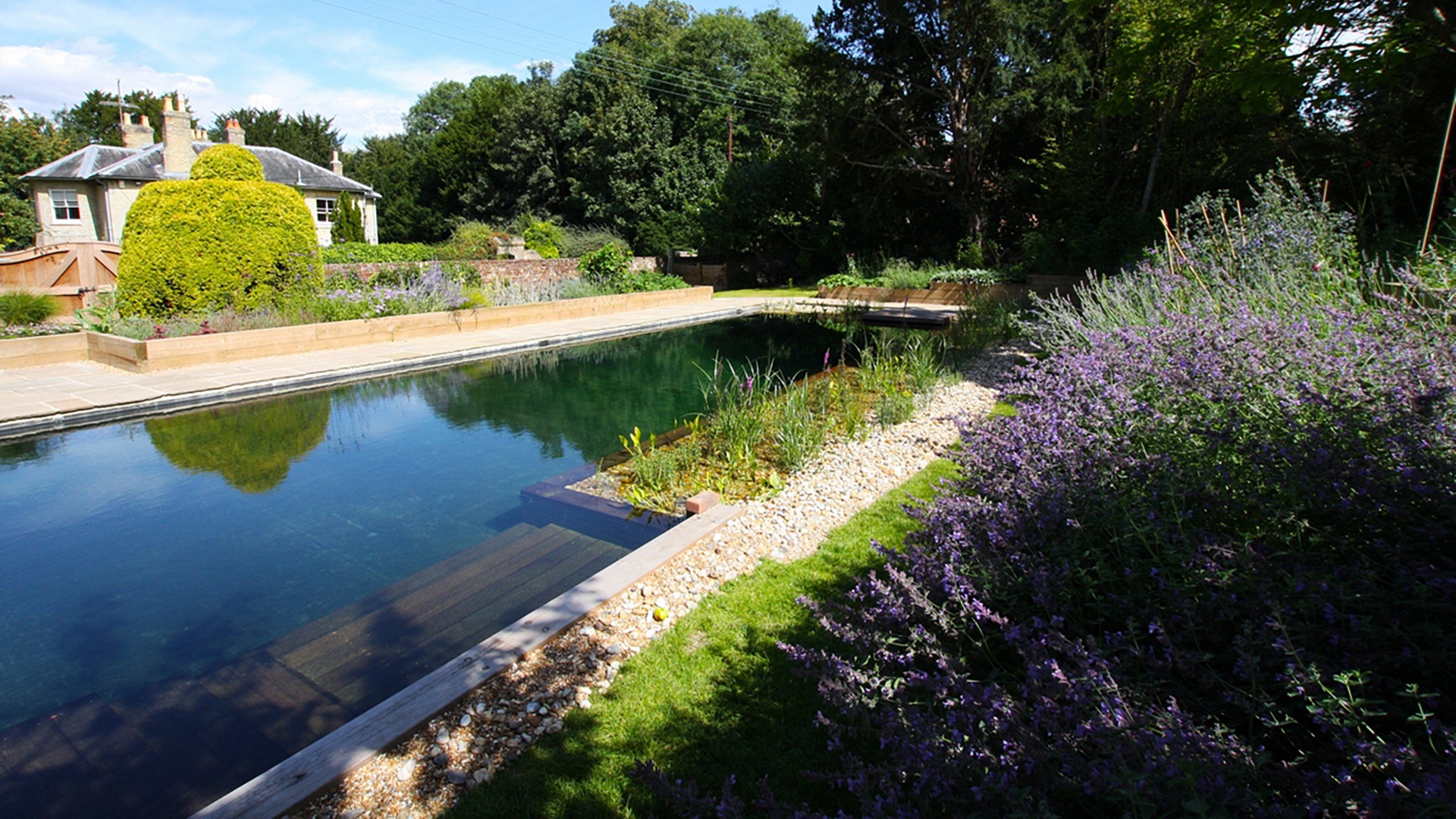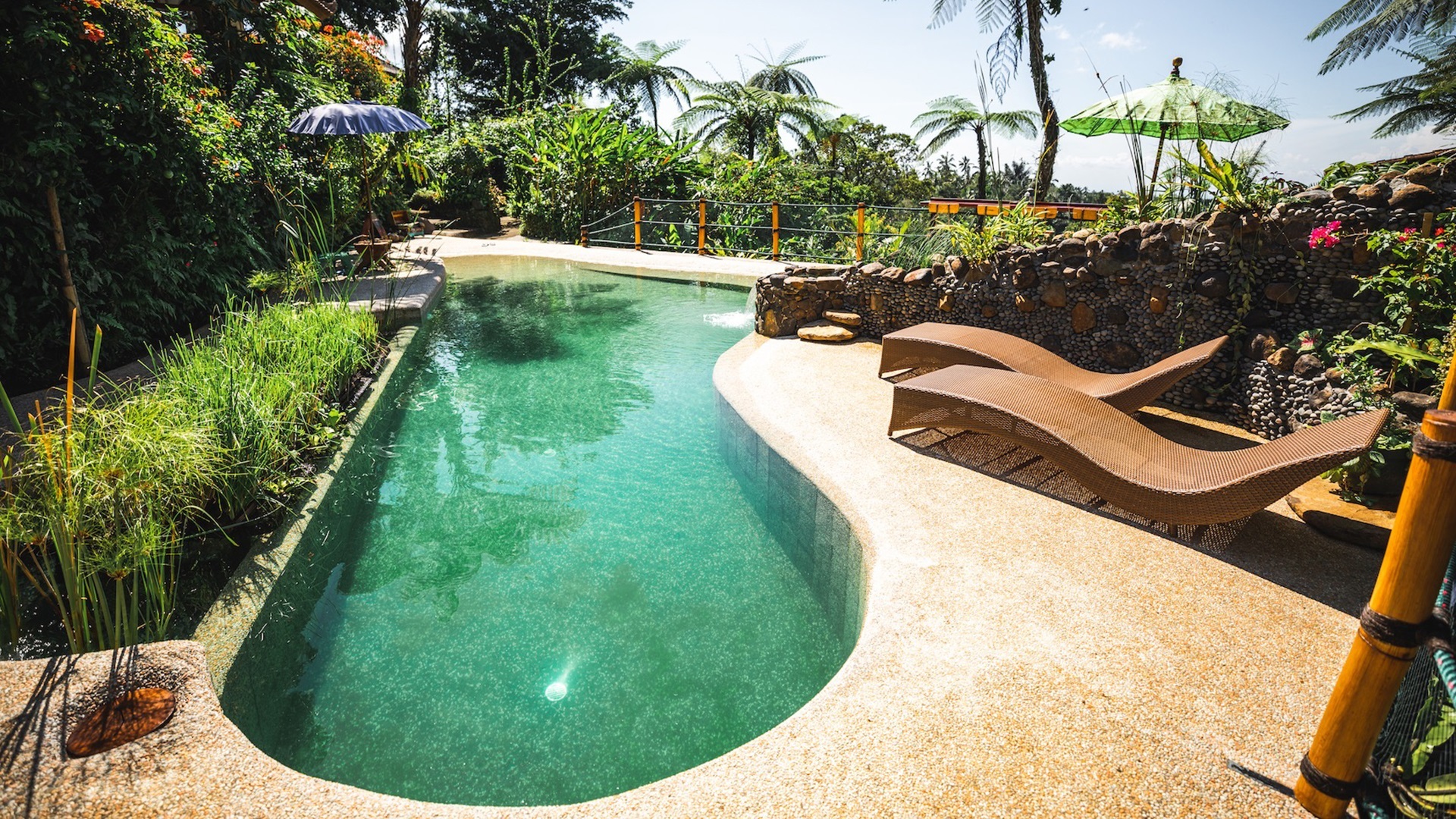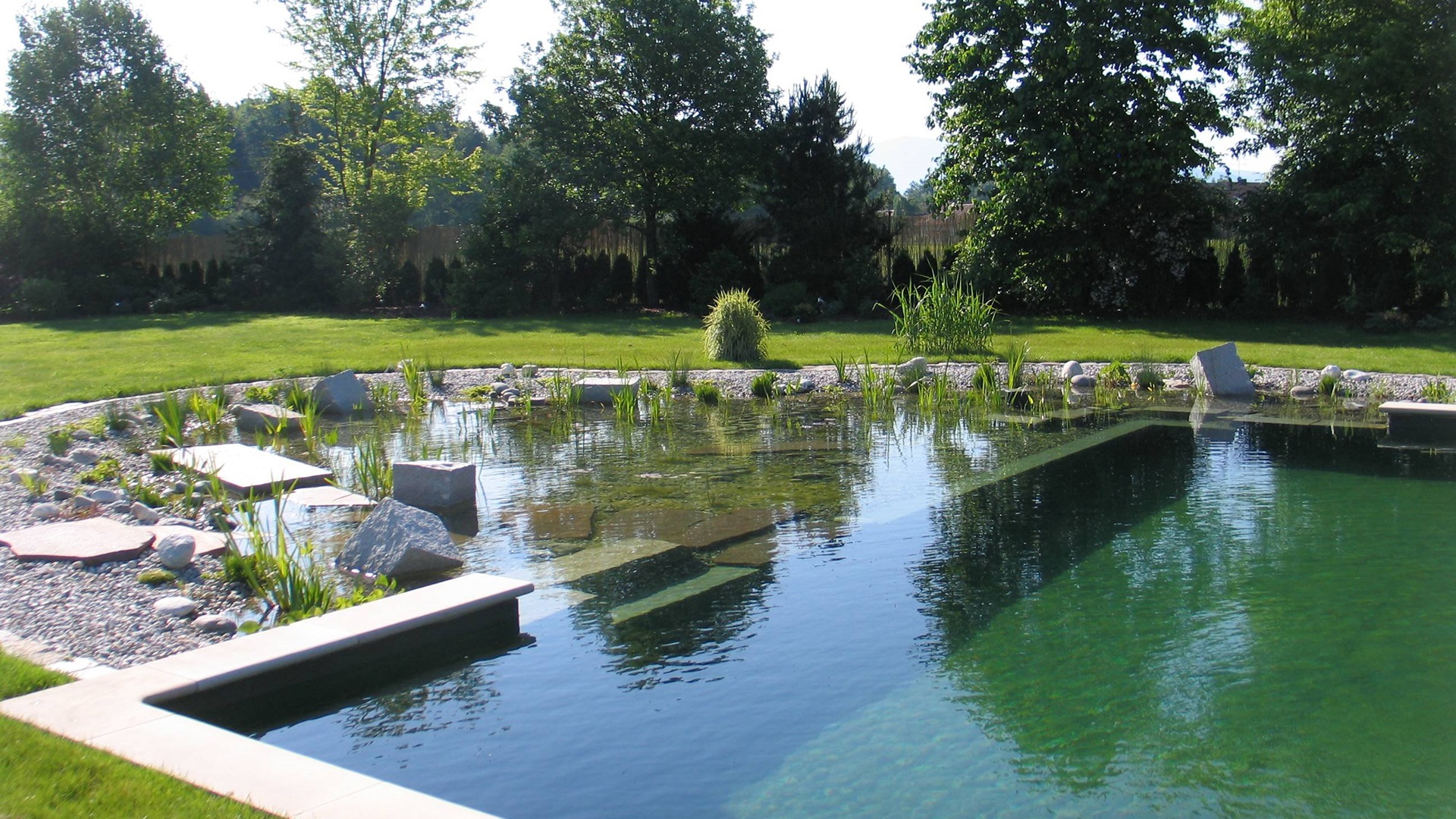In conventional swimming pools it is necessary to use chemical products to purify the water and prevent the processes called eutrophication from occurring. These consist of the accumulation of organic matter and the hatching of algae and other pathogens in the water. To stop eutrophication in conventional swimming pools, chemicals such as chlorine are used, which oxidize and kill any life that appears.
On the contrary, in natural pools, the purification of the water is entrusted to a natural closed circuit, without resorting to chemical compounds. Therefore, the pool water passes through a biological filter of aquatic plants, which absorb dirt and assimilate it as nutrients to grow.
There are two water purification systems in natural pools: those that are not technical, which require a larger surface area for regeneration, and technical systems, which optimize said surface area by means of a pumping system that recirculates the water.

The technical system for purifying the water in the natural pool works with a pumping device. This propels the water and facilitates the dragging of the dirt to the skimmers, where a mechanical pre-filtering is carried out. The water is then led to the biological filter, where the ammonia is transformed into nitrate. Subsequently, the flow reaches the regeneration zone, where the aquatic plants absorb the nutrients previously transformed in the biological filter. Finally, the now purified water is driven to the swimming pool, where the cycle starts again. In other regards, natural pools require different maintenance work than conventional pools, focused on caring for the aquatic garden.
Natural pools are ecological, healthy and sustainable. They are also more energy efficient, although they require larger surface areas than conventional ones for their construction. Among its advantages are the ease with which they are integrated into the landscaping, or the experience that bathers enjoy, similar to that offered by a natural lake.

It only remains to add that the construction of natural pools in public places is limited by local legal regulations. Therefore, its design, construction and installation must be carefully studied by able and experienced professionals such as those who integrate Amusement Logic.
By Manuel Ginés, senior architect in the Amusement Logic Department of Architecture






